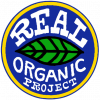
Answers to all of Your Organic Garlic Questions
Organic food is better for the environment, and better for you. Organic methods result in the use of fewer resources (such as water, synthetic fertilizer and fuel) and focus on preserving the health of the soil and the surrounding ecology. Instead of relying on synthetic fertilizer we employ methods including cover cropping and crop rotation. Instead of using herbicides to rid our field of weeds and cover crops prior to planting, we use silage tarps. Instead of turning over the soild every season (tilling) we use “no-til” methods which preserve and encourages the growth of the soil’s natural biologics, worms and beneficial insects and retains air voids.
 Yes. We completed a rigorous 9-month process to develop an organic farm plan, educate ourselves and complete the application process to ensure that our farm meets and can maintain the USDA’s standards for using the label ‘organically grown.’ Our current certifier is Baystate Organic Certifiers. Bay State is not just our certifier, but also our partner, providing expert counsel as we continue to grow and incorporate new methods.
Yes. We completed a rigorous 9-month process to develop an organic farm plan, educate ourselves and complete the application process to ensure that our farm meets and can maintain the USDA’s standards for using the label ‘organically grown.’ Our current certifier is Baystate Organic Certifiers. Bay State is not just our certifier, but also our partner, providing expert counsel as we continue to grow and incorporate new methods.
There are hundreds of varieties of garlic. The two main categories are “hardneck” and “softneck.” Hardneck garlic grows a long stem called a “scape” which is both edible and delicious. Besides serving as an enjoyable snack for humans, the purpose of the scape is reproduction. The scape, if left to fully develop, will turn into a flower – actually many (20-50+) flowers that are each attached to a tiny garlic seed called a “bobule.” If planted, the bobule will crow into a single clove, and the next year can be planted and will produce a full bulb the following year. Hardneck garlic is best grown in cold regions, which is why it is typically grown in the Northeast states like Rhode Island.
Softneck garlic lacks the scape and only some varieties grown in colder areas. Most garlic found in the store is softneck. One advantage of softneck garlic is that it is easier to mass produce, as it can be easily planted mechanically. Why? it can be planted in any direction, whereas hardneck garlic must be planted with the pointy-end facing up. For this reason, most garlic farms in the Northeast are small – 1-3 acres in size.
If properly stored (cool, dry), garlic can be properly stored for several months.
Yes! Sortof. It is easy to grown on a small scale because it is quite hearty and will thrive in a wide range of soil conditions. You can plant our seed garlic in your garden or in planters. Growing commercially takes a lot more work.
Start with organic bulbs, if you can, to be sure they have not been treated with chemicals that may keep the bulbs from sprouting. In your garden, make a trench 3-5 inches deep and plant the individual cloves about 6-8 inches apart, in rows about 8-12 inches apart. Cover the cloves (which must be pointed up for hardneck varieties) with about 2-4 inches of soil. Incorporating compost will help to loosen the soil and add organic matter. Fertilize at planting time with a fertilizer that is high in Nitrogen (the first number). Using an off-the-shelf 10-10-10 (Nitrogen (N), Phosphorus (P), Potassium (K)) is a fine option. Fertilize again in March, and then in April. Plant in full sun and irrigate as necessary (to keep soil moist) through June.
Planting time depends on your location. In Rhode Island, garlic should be planted between October 15 – November 10 (+/-). Cover with a bit of mulch (straw, or chopped leaves) if you want (this helps with moisture retention and weed suppression in the spring), but it’s not really necessary.
In the spring, you can pick some of your garlic (for example, if you have several plants that are bunched together, pick the smallest among them) and enjoy early season “green garlic” starting in May. In late June scapes will mature and a few weeks later (usually July 2-12) your garlic will be ready to harvest!
Any organic garlic clove can be reliably planted. The biggest cloves will yield the largest bulbs, so when you see the term “seed garlic” it typically just means the bulbs are larger. Saunderstown Garlic Farm seed-garlic bulbs are 2-inches in diameter or larger.
Green garlic will be available in late May/ early June. Scapes available in late June and garlic will be ready to order by the beginning of August (it needs a few weeks to dry). In the Spring, usually May, we accept pre-orders for seed garlic, and also offer subscriptions for our “Garlic of the Month Club.” If you are on our email list you will be notified.
You can find Saunderstown Garlic Farm garlic in a few places: (1) On this website; (2) At the Fisherman’s State Park Farmer’s Market between July and October; (3) The Mystic Garlic Festival (3rd week in September, each year), and; we typically have a small selection of scapes and mixed garlic varieties at our farm stand (290 Snuff Mill Road, Saunderstown, RI 02874).



